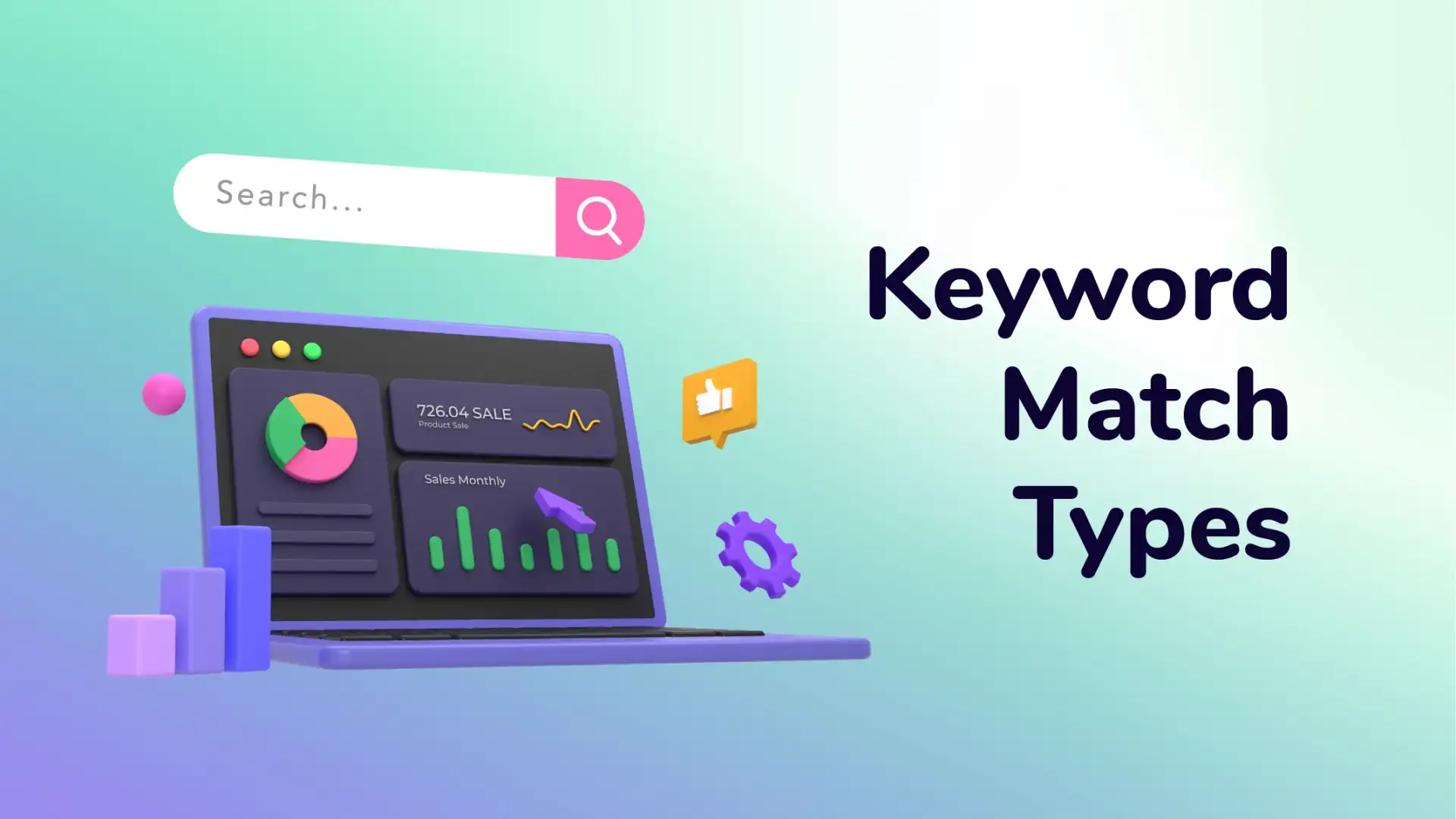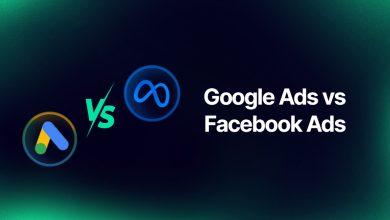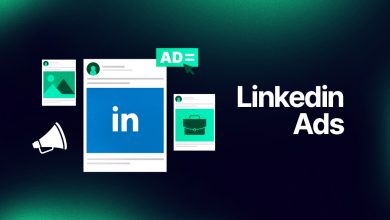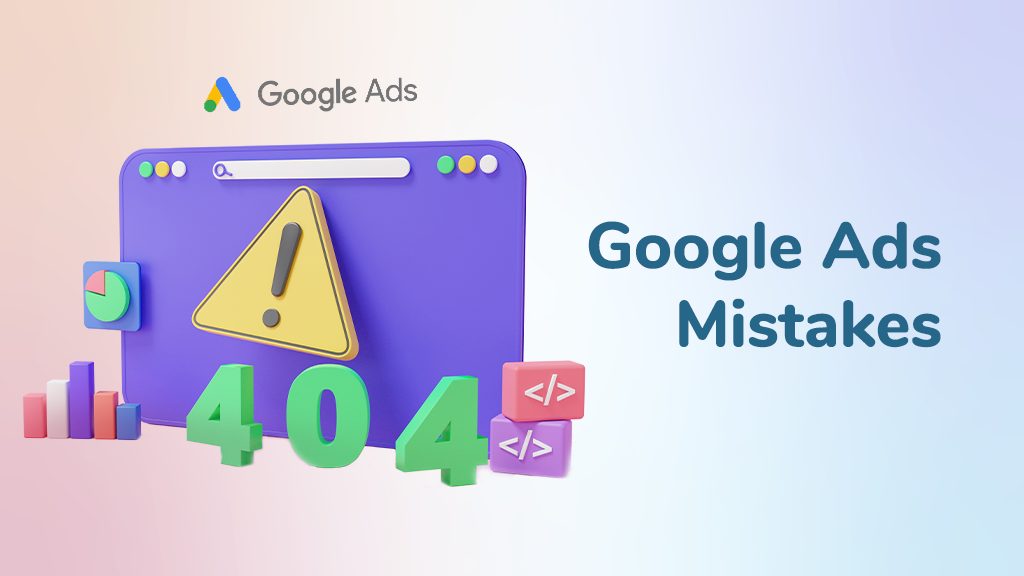Online Advertising- Best Strategies and Insights in 2025
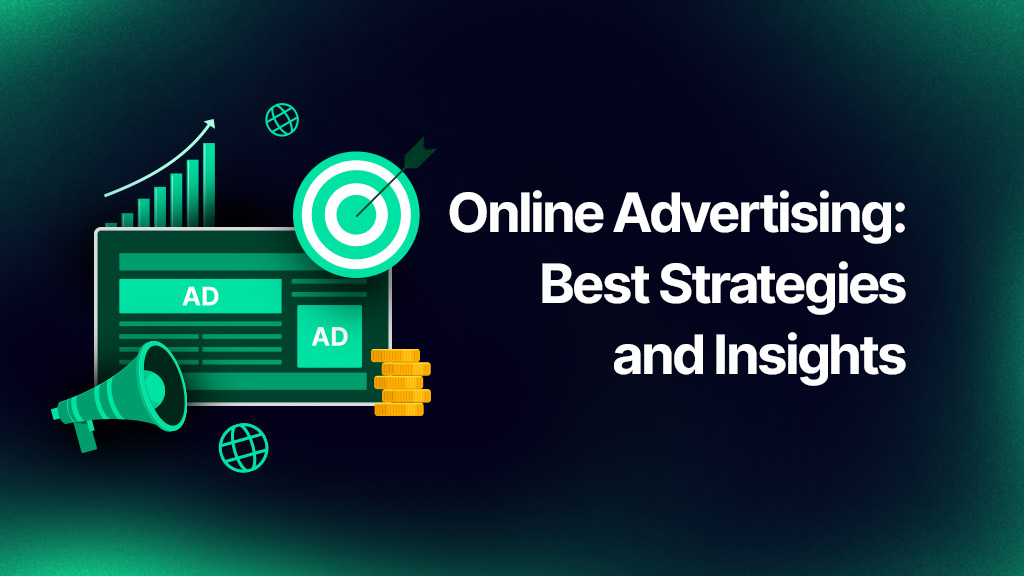
Table of Contents
- Introduction to Online Advertising
- How to Get Started with Online Advertising
- Types of Online Advertising
Online advertising is everywhere. Have you ever wondered how businesses manage to appear exactly when you search for something online? That’s the power of online advertisement!
It has completely transformed the way brands connect with their audiences. With technology evolving rapidly, advertising formats changing, and consumer behaviors shifting, staying ahead in internet advertising is more important than ever.
Whether you’re a small business owner, a digital marketer, or an entrepreneur, understanding the basics of online advertising can help you reach the right audience and get better results. Here, we’ll walk you through everything you need to know about online advertisements in 2025, why it’s essential, how it works, and how you can make the most of it.
Introduction to Online Advertising
Online advertising is at the core of modern marketing, shaping how businesses connect with their audience in a digital-first world. If you’re scrolling through social media, searching on Google, or watching a YouTube video, online ads constantly work behind the scenes to deliver targeted messages. But how does it all work, and why is it so important?
Here, we’ll dive into why online marketing and advertising has become essential, its benefits, and how the process works. From bidding strategies to budget allocation, understanding these fundamentals will help you create effective online Internet advertising campaigns that drive accurate results. Let’s get started!
Why Online Advertising is Essential
Online advertising is crucial in today’s digital world because it allows businesses to reach their audience quickly and efficiently. Unlike traditional advertising, which has limited targeting capabilities, advertising online ensures that your message reaches the right people at the right time.
Why does this matter? First, online advertising offers precise targeting. You can reach specific demographics, interests, and behaviors. This increases engagement and conversion rates compared to traditional advertising.
Additionally, online advertising ads provide instant visibility and measurable impact. Online advertisers can track clicks, impressions, and conversions in real-time, allowing for optimization and cost efficiency. Companies can start small and scale with flexible budgets as they see results.
With the right strategy, online marketing advertising helps businesses grow by driving traffic, increasing sales, and building brand awareness. It’s a powerful tool for companies looking to stay competitive in 2025 and beyond.
Key Benefits of Online Advertising
Why do businesses invest so much in online advertising? The answer is simple: it works. Digital ads offer precise targeting, real-time tracking, and measurable results. If you want to increase brand awareness, drive sales, or engage with your audience, website advertising provides multiple benefits that help businesses grow.
What makes online advertising marketing so powerful? Here are some key benefits:
- Targeted Reach: You can reach the audience most likely to buy from you.
- Cost-Effective: You control how much you spend and optimize for better returns.
- Measurable Performance: Unlike traditional ads, you can track precisely how well your campaign is performing.
- Real-Time Adjustments: You can edit your ads as you go to improve results.
- Diverse Formats: There are many ways to advertise, from search and social media to display and video ads.
How Online Advertising Works
At its core, online advertising operates through an auction system where advertisers bid for placements. The most common pricing models are:
- Pay-Per-Click (PPC): You only pay when someone clicks on your ad.
- Cost-Per-Impression (CPM): You pay for every 1,000 times your ad is shown.
- Cost-Per-Action (CPA): You pay only when a user takes a specific action (like signing up or purchasing).
What’s a Bid?
Have you ever wondered why some ads appear at the top of search results while others don’t? It’s all about bidding. When you run an ad, you set the maximum amount you’re willing to pay for a click, impression, or action.
- Manual Bidding: You set the bid amount yourself.
- Automated Bidding: The platform adjusts your bids to get the best results for your budget.
How Much Should You Spend?
Determining how much to spend on online advertisements depends on multiple factors, including your business goals, industry competition, and expected return on investment. The key is to balance spending enough to generate meaningful results while ensuring that your budget remains sustainable.
An online advertiser typically considers metrics like Cost-Per-Click (CPC), Customer Lifetime Value (CLV), and conversion rates to determine an appropriate budget. A small business may start with a modest budget and scale up based on performance, while larger companies with higher revenue expectations may allocate significant funds for broader reach and conversions.
Regardless of your budget, continuous optimization and data analysis are essential to ensure every dollar spent contributes to your online advertising success. There’s no one-size-fits-all answer to budgeting for online ads. It depends on your goals and industry.
How to Get Started with Online Advertising

Getting started with online advertising might seem overwhelming initially, but with the right approach, it can become an invaluable tool for reaching your audience and growing your business. The key is to start with a clear strategy. A structured plan will help you get the most out of your web advertising efforts.
Here, we’ll cover the essential steps to launch a successful online ad campaign, from defining your objectives to setting a budget and selecting the best platforms. Let’s dive in!
Setting Clear Advertising Goals
Setting clear advertising goals is the first step to successful internet marketing advertising. Before launching any ads, businesses need to define their objectives. Having a clear direction ensures your money is spent efficiently. A well-defined goal also helps select the right ad format, messaging, and audience targeting.
By setting measurable objectives, businesses can track performance and optimize campaigns for better results. Before you dive into online advertising, ask yourself: What do I want to achieve? Common goals include:
- Brand Awareness: Reaching as many people as possible.
- Lead Generation: Getting potential customers to sign up.
- Sales & Conversions: Encouraging purchases or actions.
Choosing the Right Platforms
With so many Internet advertising platforms available, selecting the right one depends on your target audience and business goals. Google Ads works well for search intent-based marketing, while Facebook and Instagram are great for visually-driven brand awareness. LinkedIn is ideal for B2B advertising, whereas TikTok and Snapchat address younger demographics with engaging short-form content.
Understanding the strengths of each platform allows businesses to allocate their budgets effectively and increase return on investment. With so many online advertising platforms available, how do you pick the right one? It depends on your audience and goals. Popular choices include Google Ads, Facebook Ads, and LinkedIn Ads.
Creating an Effective Advertising Plan
A well-thought-out advertising plan ensures consistency and efficiency in marketing efforts. It begins with identifying the target audience and understanding their online behavior. Next, businesses should create attractive ad copy and visuals that resonate with potential customers.
Choosing the right ad format is vital to engagement. Additionally, setting a timeline for campaigns and continuously monitoring performance help refine strategies and improve results over time. A solid plan will help you get the most out of your budget.
Budgeting for Online Ads
Budgeting effectively for online ads requires balancing spending with expected returns. Businesses should determine an initial test budget and analyze performance before scaling investments. Factors such as cost-per-click (CPC), customer lifetime value (CLV), and conversion rates help set an appropriate budget.
Platforms like Google and Facebook offer automated bidding strategies to maximize ad spend efficiency. Adjusting the budget based on data-driven insights ensures the marketing budget is spent on the highest-performing ads. It’s always a good idea to start with a test budget and adjust based on performance. Some tips:
- Daily vs. lifetime budgets: Decide whether to spread your budget over time or set a cap.
- Prioritize high-performing ads: Focus your budget on what’s working best.
- Leverage automation: Platforms like Google and Facebook offer automated bidding to help maximize results.
Types of Online Advertising

Online advertising comes in many forms, each offering unique advantages depending on your business goals and target audience. From social media ads that engage users in their favorite apps to search ads that capture intent-driven audiences, choosing the right format is essential for success.
Businesses can use different advertising types to drive traffic, generate leads, and boost conversions. Understanding how these different formats work will help you create a more effective digital marketing strategy. Let’s explore the most popular types of online advertising and how they can benefit your business.
Social Media Advertising
Social media advertising allows businesses to promote their products and services to targeted audiences on platforms like Facebook, Instagram, LinkedIn, and TikTok. With advanced targeting options and engaging ad formats, brands can boost visibility, drive traffic, and increase conversions efficiently. Businesses can effectively connect with their audience and achieve their marketing goals by using the right platform and ad strategy.
1. Facebook
Facebook Ads offer highly targeted advertising options, allowing businesses to reach users based on demographics, interests, behaviors, and even past interactions. You can use different online advertising formats like video, carousel, and lead ads.
2. Instagram
Instagram Ads focus on visual storytelling, making them ideal for brands that rely on strong imagery and video content. With options like Stories ads, Shopping ads, and Reels ads, businesses can showcase their products creatively and engagingly.
3. LinkedIn
LinkedIn Ads are specifically designed for B2B marketing. They help businesses connect with professionals based on job titles, industries, and company size. Sponsored content, InMail ads, and lead generation forms allow advertisers to target decision-makers effectively.
4. X (Formerly Twitter)
X Ads help businesses engage in real-time conversations and trending topics. Advertisers can use promoted tweets, trends, and video ads to increase brand awareness and drive website traffic.
5. Pinterest
Pinterest Ads work well for e-commerce, fashion, home decor, and lifestyle brands. The platform allows businesses to promote visually appealing content that inspires users and drives them to take action. With features like promoted pins and shoppable ads, brands can turn inspiration into sales.
6. YouTube
YouTube Ads use video marketing to engage users with skippable and non-skippable ads, bumper ads, and in-stream ads. As the second-largest search engine, YouTube provides a vast audience reach, making it an effective platform for brand storytelling, product demonstrations, and educational content.
7. Snapchat
Snapchat Ads are ideal for brands looking to engage younger audiences through interactive content. With ad formats like Snap Ads, Story Ads, and AR Lenses, businesses can create fun and engaging experiences that encourage user interaction and brand recall.
8. TikTok
TikTok Ads focus on short-form video content to engage users with in-feed ads, branded effects, and influencer collaborations. The platform’s algorithm-driven content discovery ensures that brands can reach a broad audience, making it a powerful tool for increasing brand awareness and driving conversions.
Paid Search Advertising
Another type of online advertising is paid search advertising. This allows businesses to appear at the top of search engine results when users search for relevant keywords. Unlike organic search results, paid search ads are displayed based on a bidding system in which advertisers compete for placements. This form of advertising is highly effective because it targets users with high purchase intent.
What Are Keywords?
Keywords are the foundation of paid search advertising. They represent the words or phrases users type into search engines when looking for information, products, or services. Choosing the right keywords ensures that your ads appear in front of the right audience. Advertisers do keyword research to identify terms that are relevant to their offerings and have a high likelihood of converting.
Match Types Explained
Search engines like Google and Bing allow advertisers to use different keyword match types to control how broadly or narrowly their ads are triggered. The main match types include:
- Broad Match: Displays ads for searches that are related to the keyword, even if they don’t include the exact phrase. It provides the widest reach but may attract irrelevant traffic.
- Phrase Match: Shows ads for searches that contain the exact phrase or close variations, maintaining a balance between reach and precision.
- Exact Match: Ads appear only when users search for the exact keyword or close variants, ensuring highly targeted traffic but with a narrower reach.
Understanding and utilizing match types effectively helps online advertisers optimize their campaigns and maximize ROI.
Comparing Google, Bing, and Yahoo
When it comes to paid search advertising, different search engines offer varying levels of reach, cost, and competition:
- Google Ads: The most widely used platform, offering extensive reach and advanced targeting options. While competition is high, Google Ads provides advanced tools for optimizing campaigns.
- Bing Ads: A less competitive alternative that often offers lower cost-per-click (CPC) rates. Bing Ads also reaches audiences on Yahoo and AOL, making it a cost-effective choice for certain industries.
- Yahoo Ads: Though less commonly used, Yahoo still presents an opportunity for advertisers looking to diversify their paid search strategy.
Choosing the right platform depends on budget, audience demographics, and overall marketing goals. Many businesses use a combination of these platforms to maximize visibility and conversions.
Native Advertising
Native advertising blends seamlessly with platform content, making ads appear natural rather than disruptive. These online ads match the look and feel of their surroundings, increasing engagement and trust.
Common formats include sponsored articles, in-feed social media ads, and recommended content. Platforms like Google and Facebook offer native ad solutions that help businesses boost brand awareness and drive conversions without interrupting the user experience.
Display Advertising
Another type of online advertising is display advertising. This type uses visual ads, such as banners and videos, to attract users across websites, apps, and social media platforms. Display ads are highly effective for brand awareness and retargeting campaigns, reaching users while they browse online rather than actively searching for products.
1. Google Display Network
Google Display Network (GDN) allows businesses to show ads across millions of websites, YouTube, and Gmail. With advanced targeting options like audience demographics, interests, and remarketing, advertisers can reach potential customers at various stages of their buying journey. GDN supports different ad formats, including responsive display ads, image ads, and rich media ads, making it a versatile platform for digital advertising.
2. Facebook Audience Network
Facebook Audience Network extends Facebook ads beyond its platform, displaying them in mobile apps and partner websites. This network helps businesses reach a broader audience with native, banner, and video ads while leveraging Facebook’s powerful targeting capabilities. It’s beneficial for mobile-focused campaigns and expanding reach beyond social media.

Which is an Example of Online Advertising?
An example of online advertising is a Google Search Ad that appears when users search for a product or service. Other examples include Facebook Ads displayed in users’ feeds, banner ads on websites, and YouTube video ads that play before a video starts.
